Introduction to Model view in Power BI
In this exercise, we will learn about the Model view in Power BI Desktop. In Model view we can view and work with complex semantic models that contain many tables.
To access Model view, select the Model icon found on the left side of Power BI Desktop, as shown in the following image.
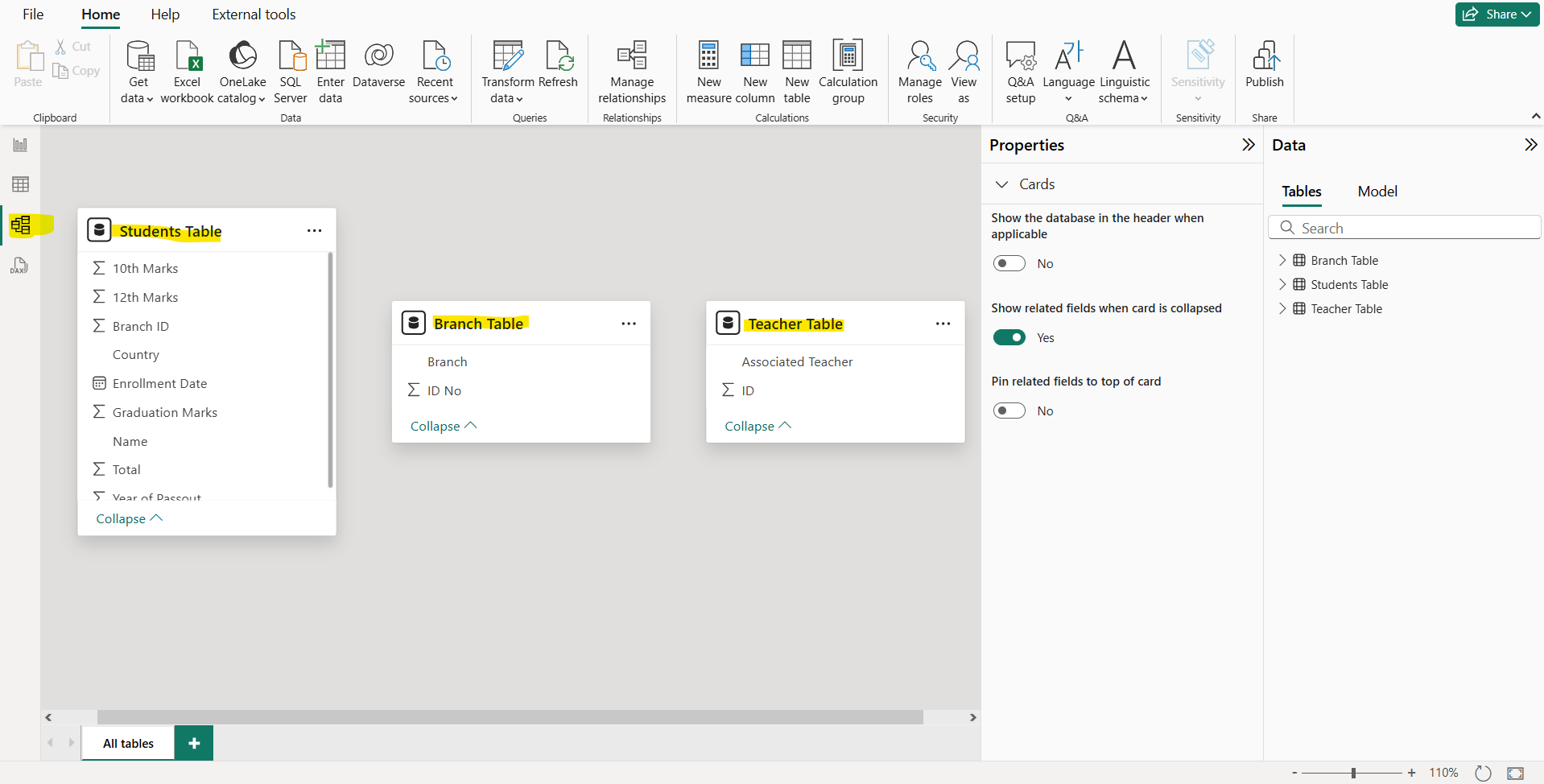
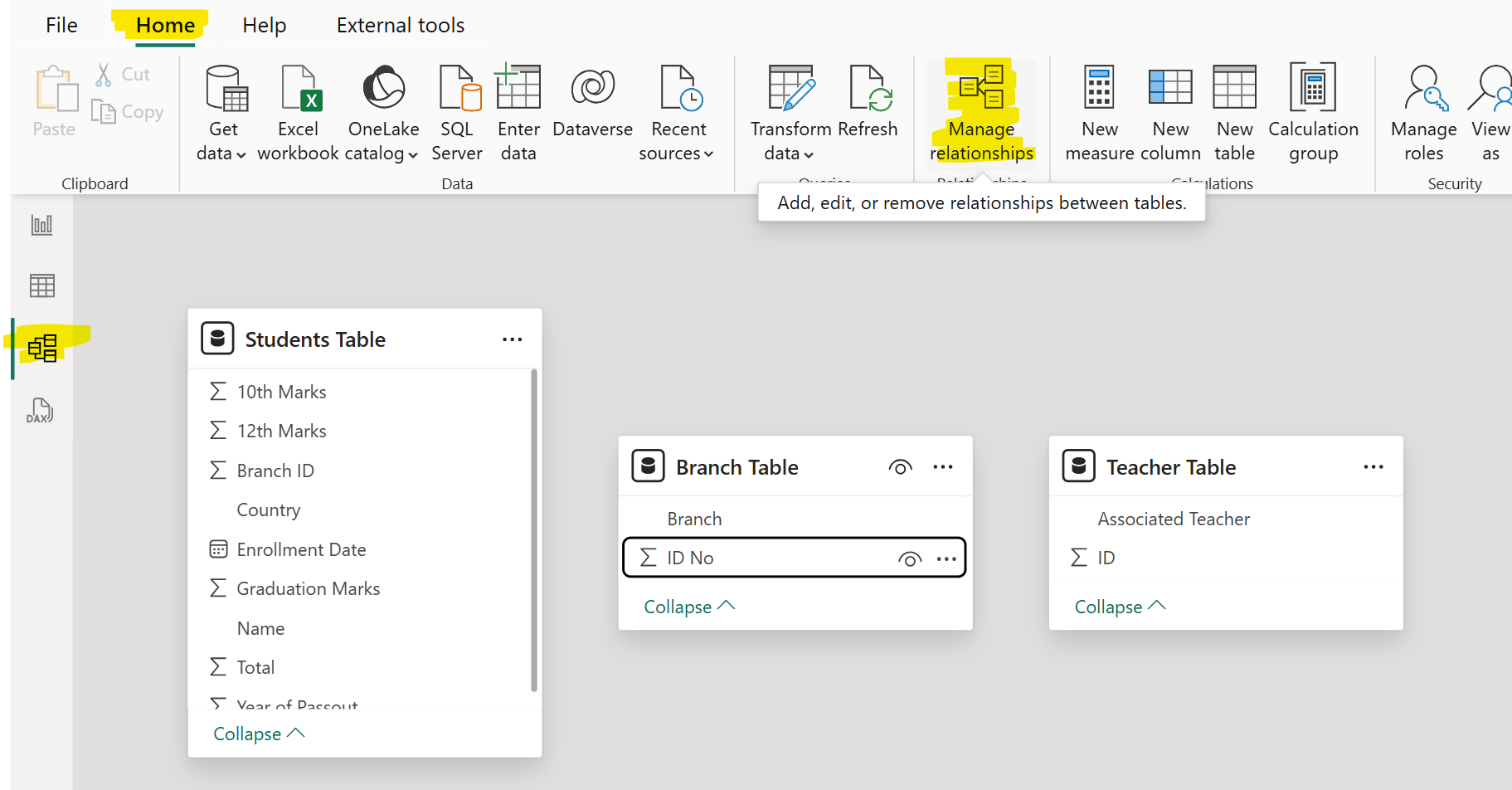
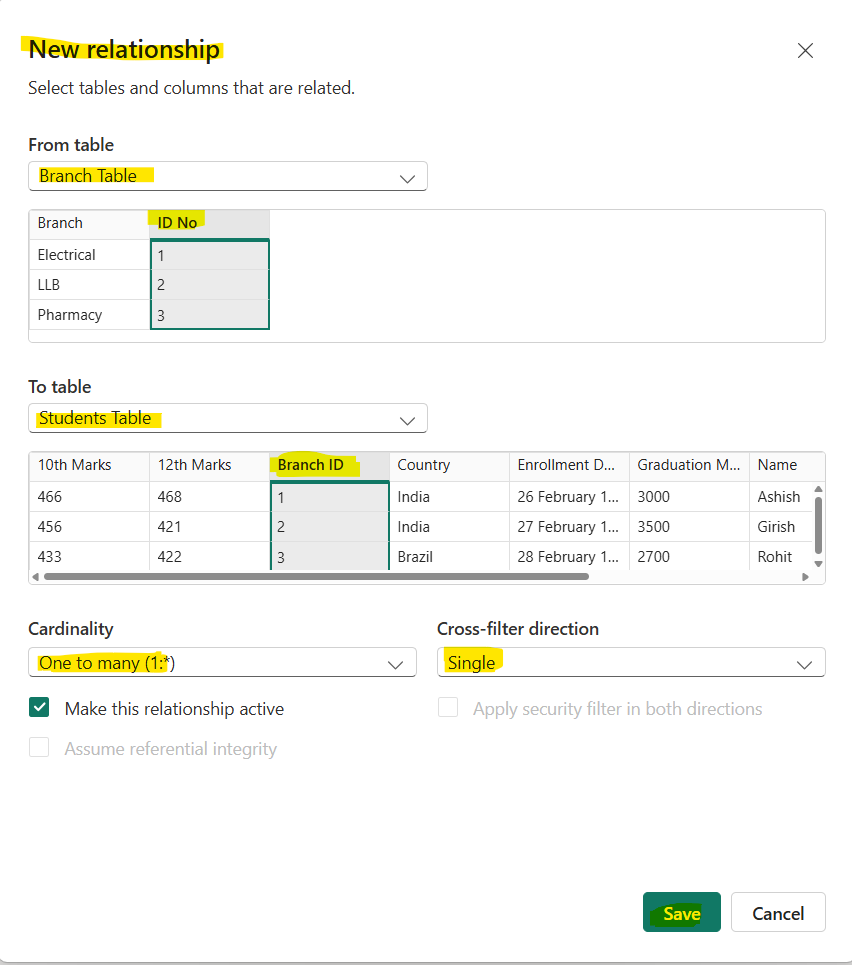
In the Model view, the lines between the tables represent relationships. The arrow on the relationship line, represents the filter direction.
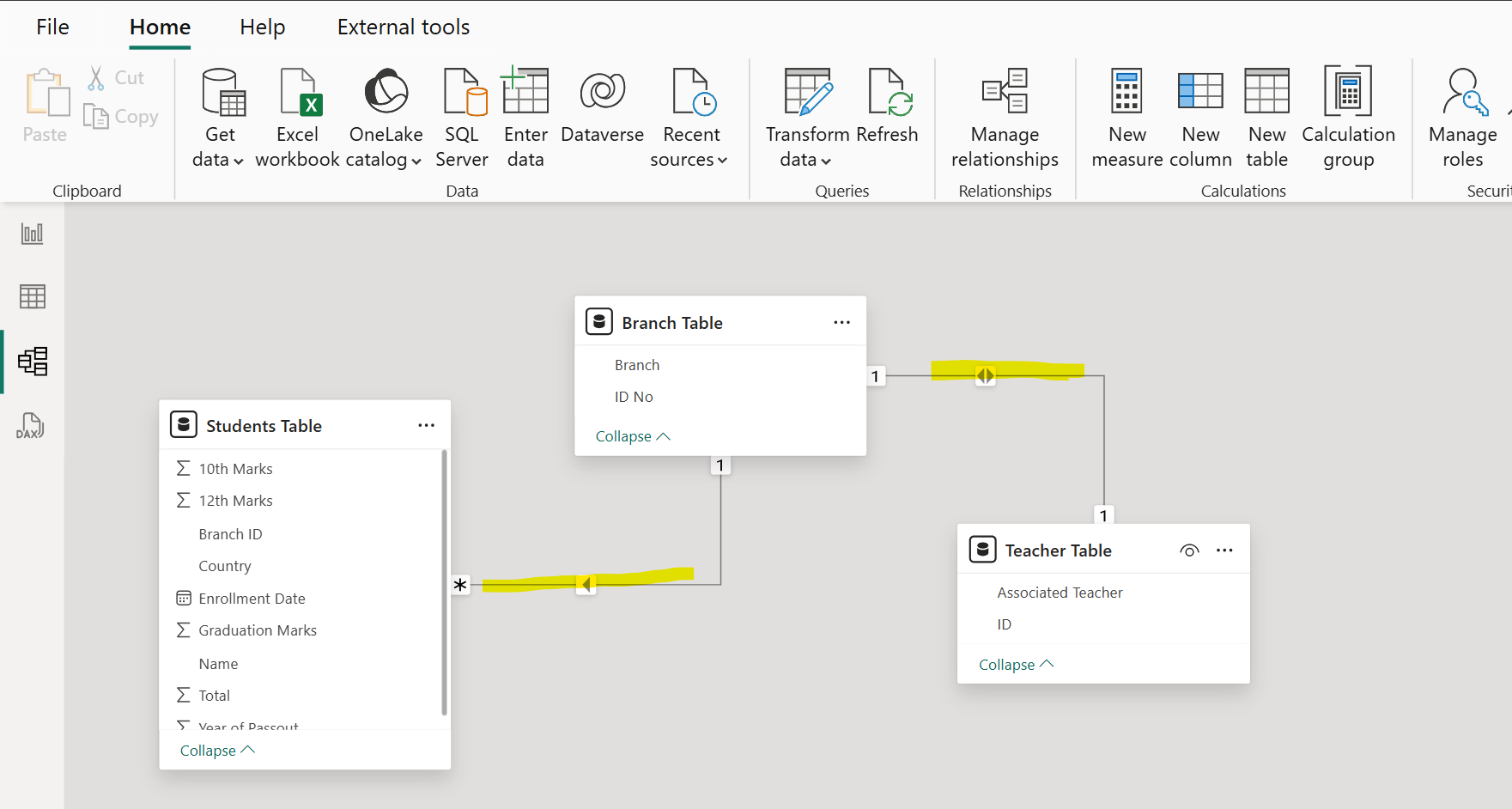
So, it means the ‘Students Table’ is filtered by the ‘Branch Table’, but ‘Branch Table’ is not filtered by ‘Students Table’. The ‘Branch Table’ and ‘Teacher Table’ can bidirectionally filter each other.
To remove a relationship, right-click the relationship and select Delete. When prompted to confirm the deletion, select OK.
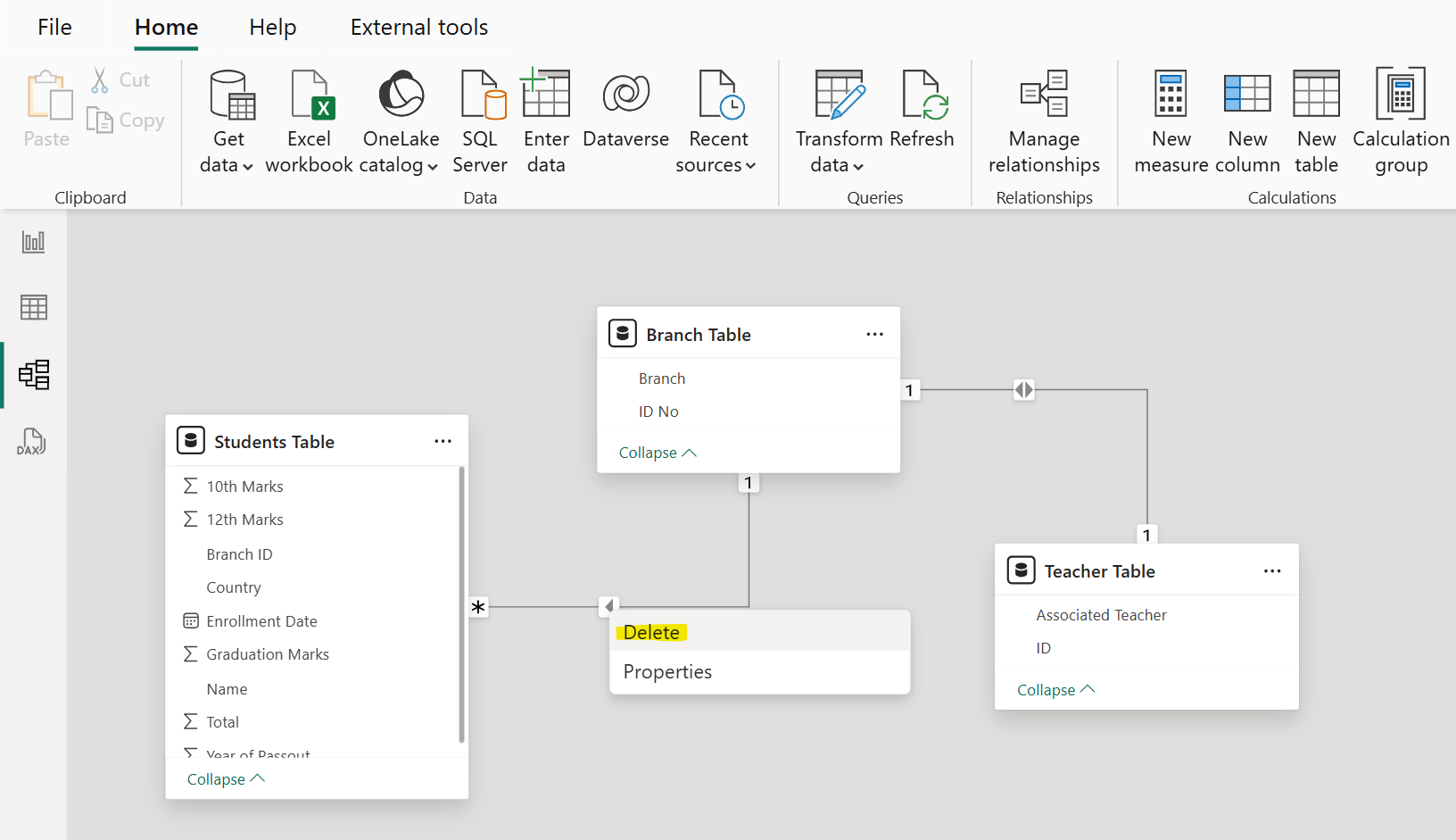
Click on Properties to open the Edit relationship dialog box.
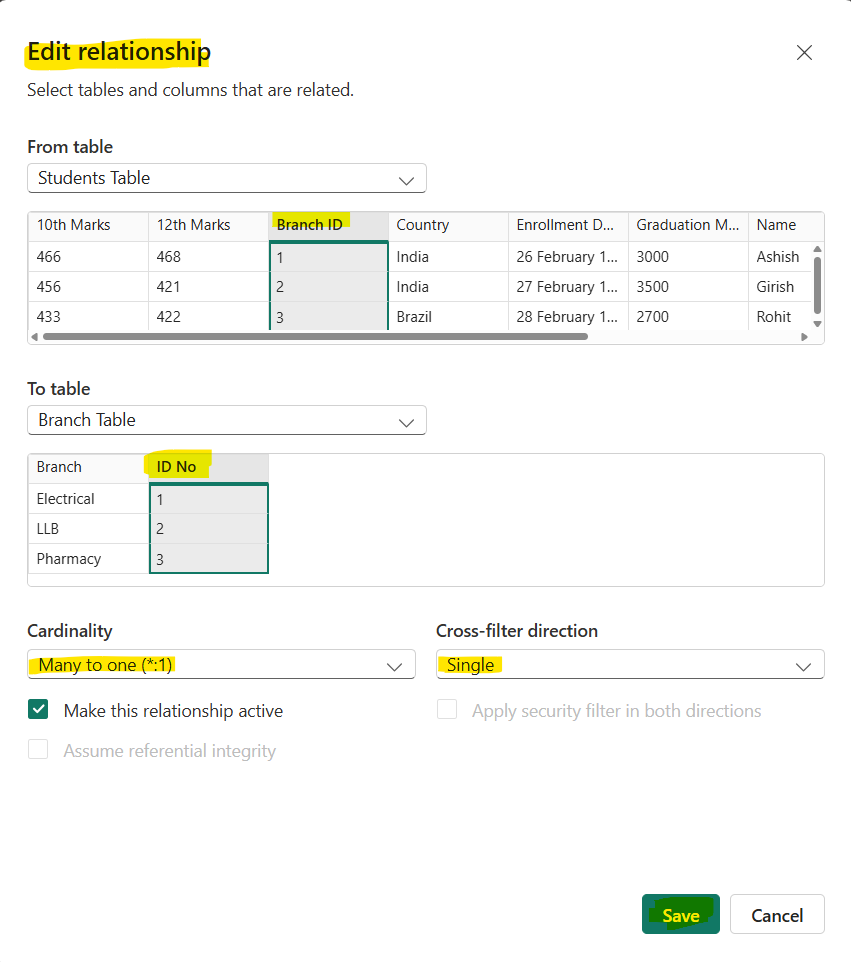
After creating the relationship, we can use the columns in the table.
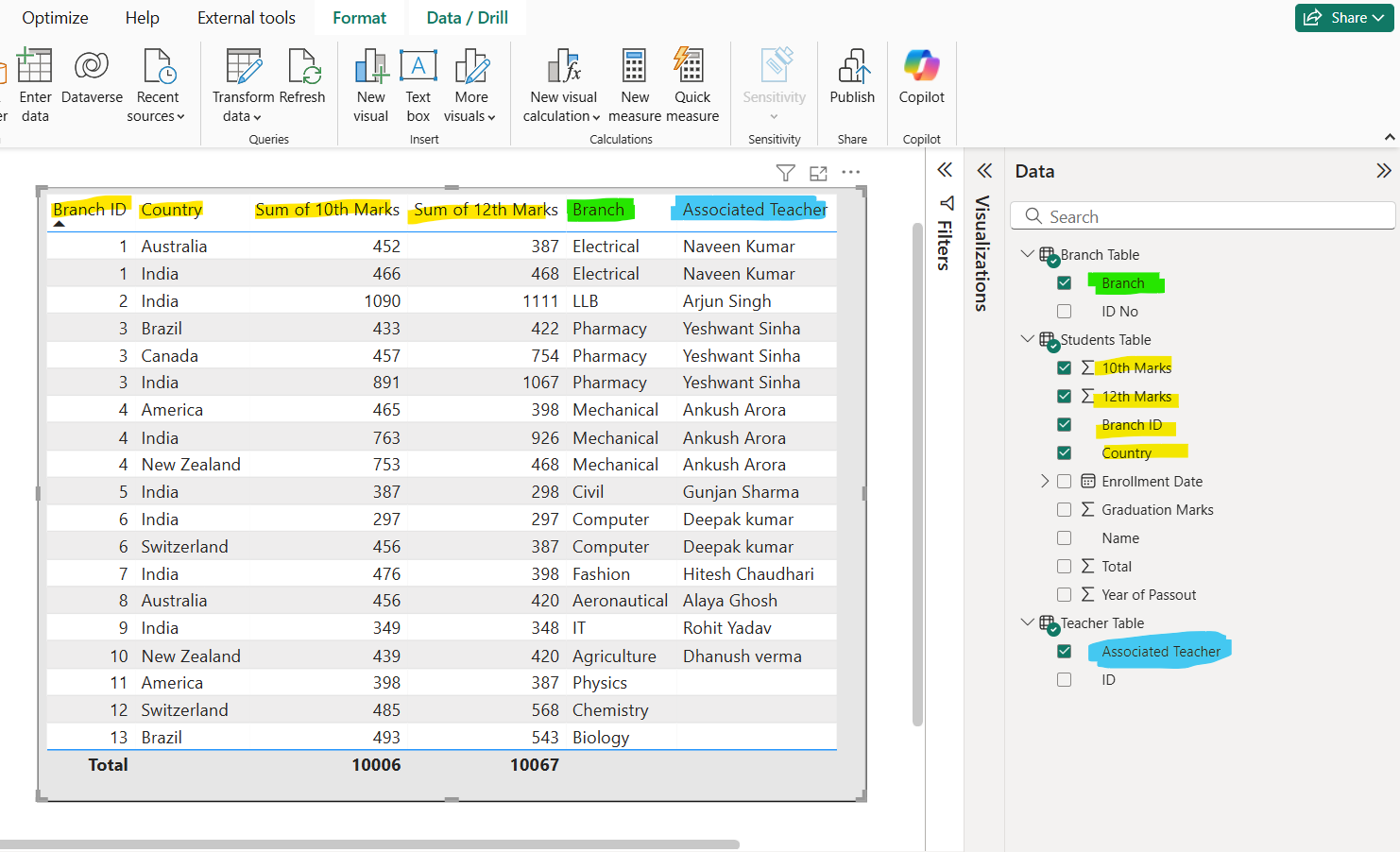
In the Model view, we have the option to hide a table or individual column from the report and select eye icon to show or hide from the report view. Also, we have the option to click on the “Is hidden” from the Properties pane.
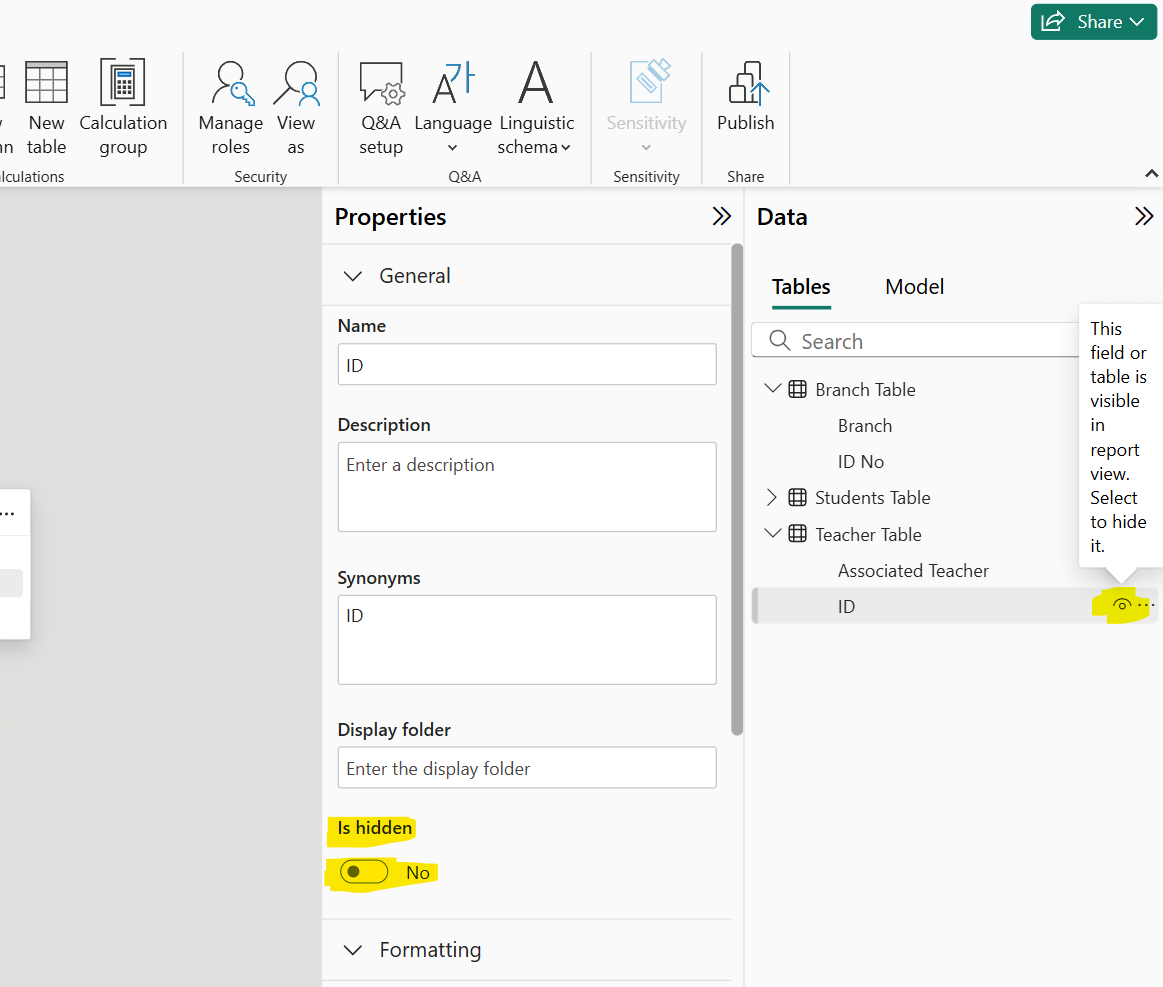
Alternatively, in the Model view, right-click the table or column and click on Hide in report view.
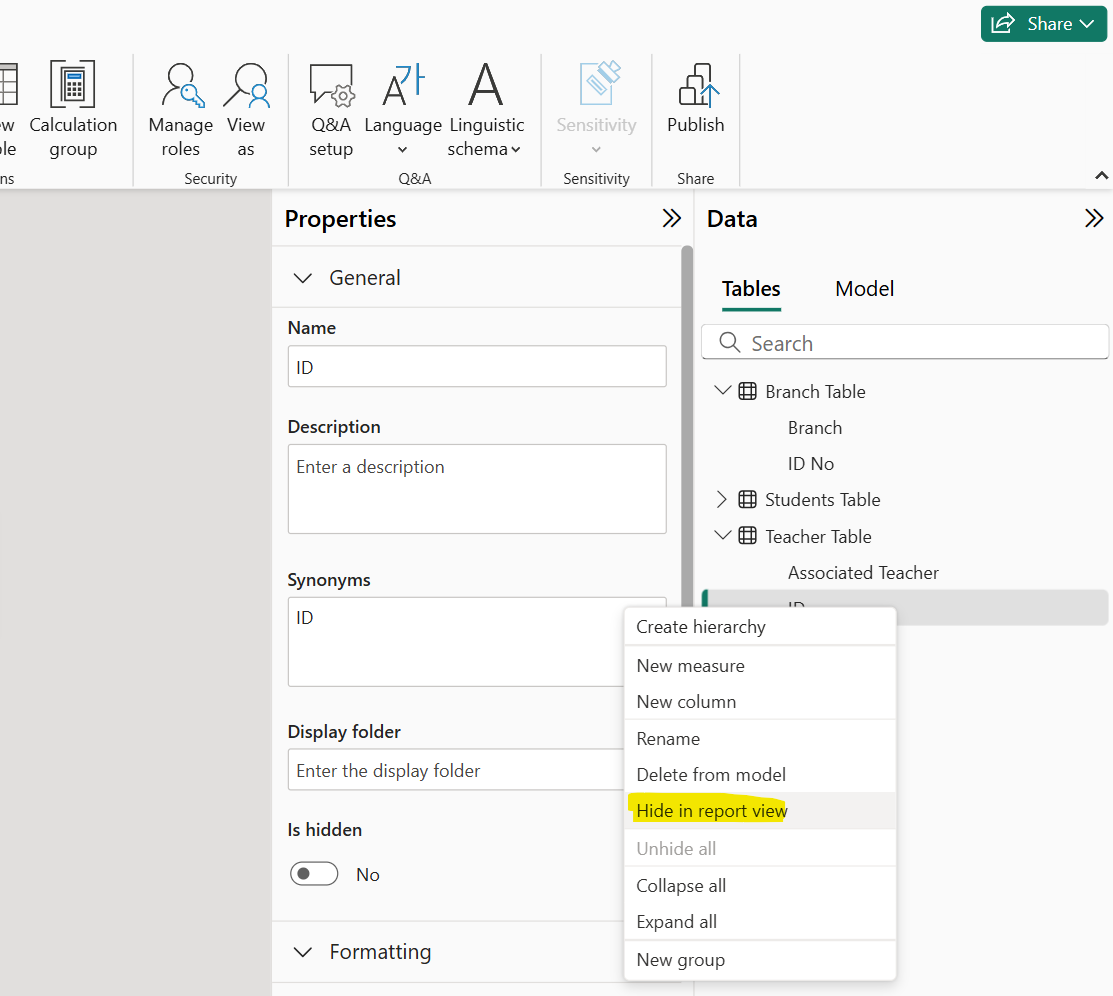
Hide in report view makes the field inaccessible in the report tab, but still, it is available in Data and Model views.
Note: We can hide the foreign keys in the fact table and force the users to use the primary keys in the dimension tables.
Go the Data view. We can see that the hidden column is shown like in the image below:
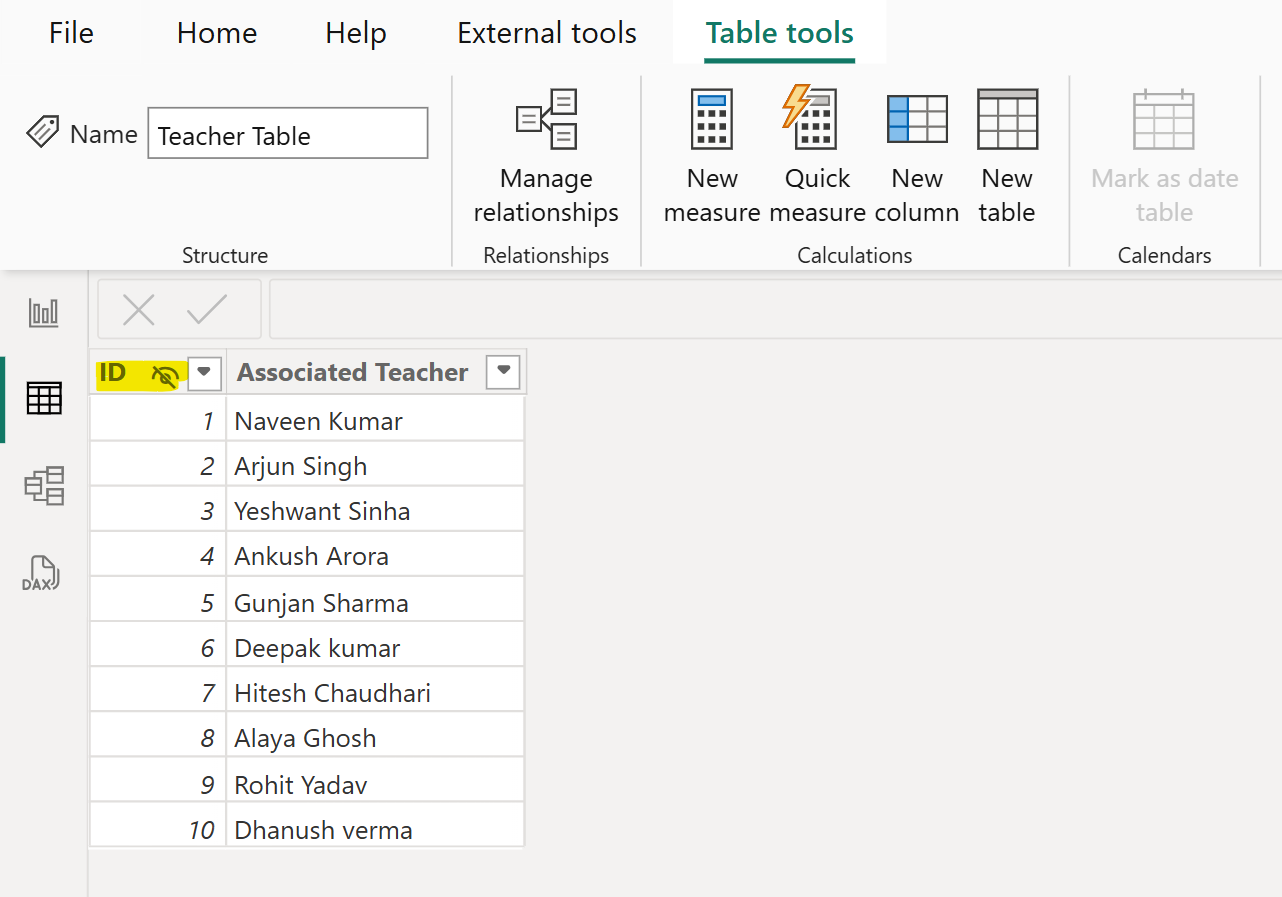
FACT & DIMENSION TABLES Data models generally contain two types of tables: fact (“data”) tables and dimension (“lookup”) tables:
• Fact tables contain numerical values or metrics used for summarization (sales, orders, transactions etc.).
• Dimension tables contain descriptive attributes used for filtering or grouping (products, customers, dates, stores, etc.).
Star schema and Snowflake schema In Power BI, data modeling is crucial for creating efficient and easy-to-maintain reports. Two popular schema designs we might encounter are the star schema and the snowflake schema.
• Star Schema: In Star schema the fact table is surrounded by the multiple dimension tables.
• Snowflake schema: The Snowflake schema is the extension of the Star schema; the relationship is built in between the dimension tables.